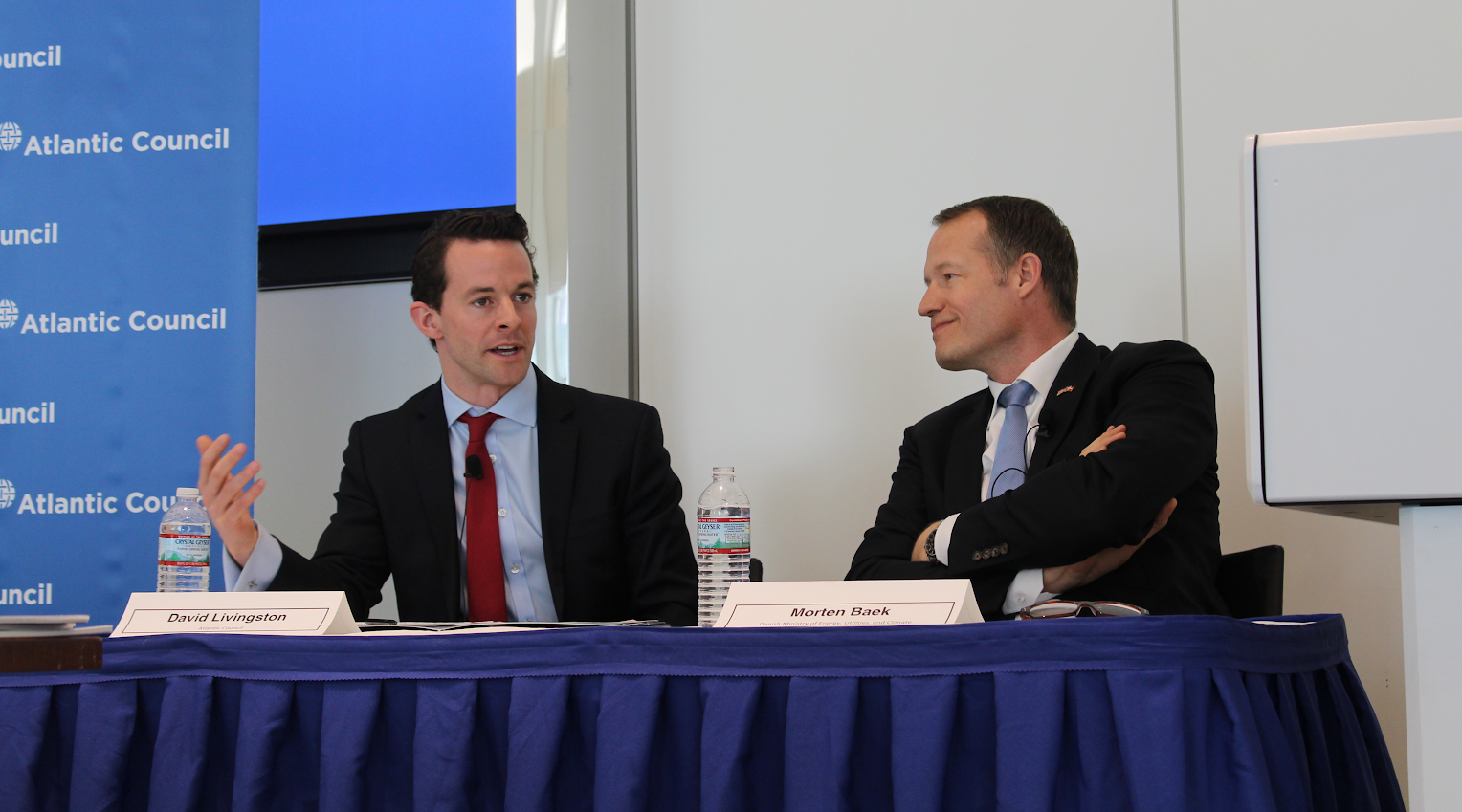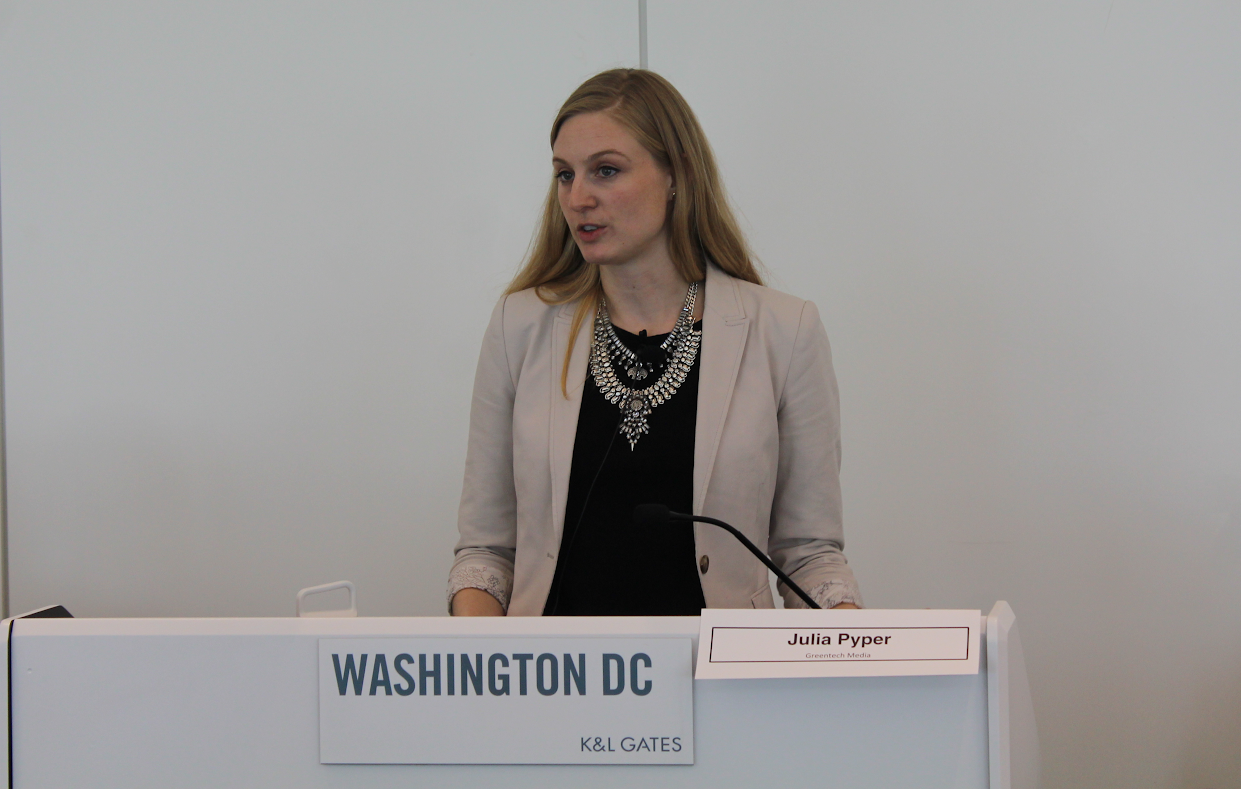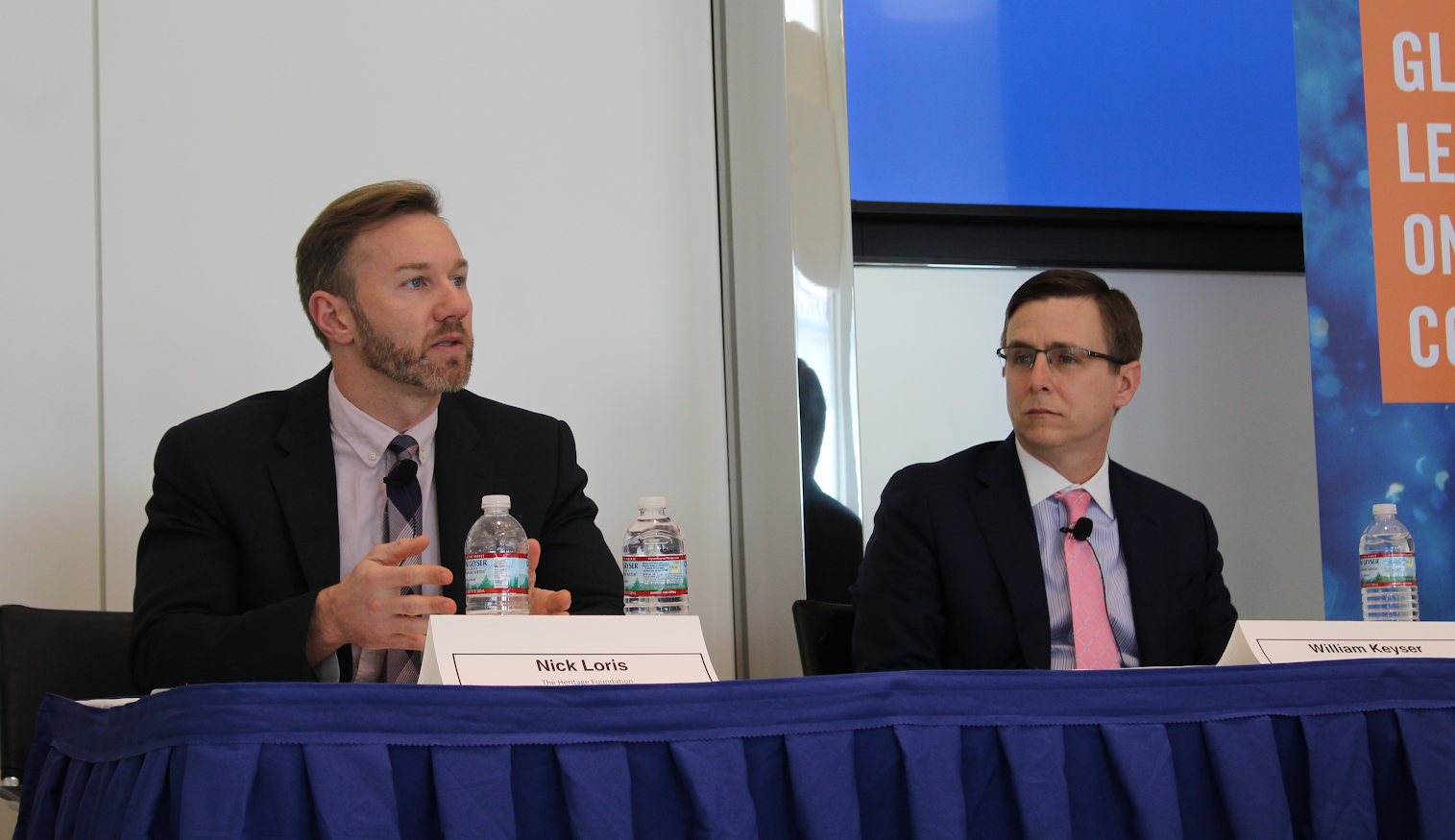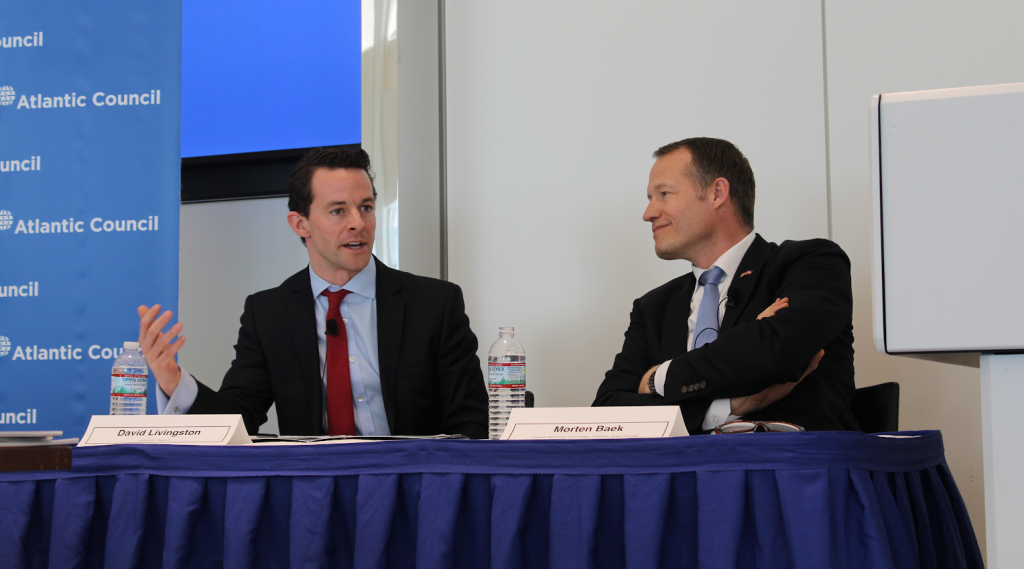
On March 27th, the Atlantic Council Global Energy Center, K&L Gates, and the Embassy of Denmark hosted a discussion on the future of renewable energy and the role of the free market in efficiently and effectively advancing the energy transition. Julia Pyper, senior editor of Greentech Media, moderated a panel consisting of David Livingston, deputy director for climate and advanced energy at the Atlantic Council Global Energy Center; Morten Bæk, permanent secretary of state for the Danish Ministry of Energy; Nicolas Loris, deputy director of the Thomas A. Roe Institute for Economic Policy Studies and fellow in energy and environmental policy for the Heritage Foundation; and William Keyser, partner and practice group coordinator for K&L Gates. The conversation explored a number of financial, infrastructure, and policy issues related to the energy transition, and looked to Denmark as a potential success story for their efficient transition to offshore wind.

Moderator Julia Pyper, of Green Tech Media.
Livingston provided introductory remarks to help frame the conversation before turning it over to Pyper. She began by arguing that renewables are currently competitive sources of energy. According to the 2016 World Economic Forum, unsubsidized new renewables are cheaper than fossil fuels in over thirty countries, with potential to expand to every country by 2025. Denmark is one such country that achieved successful implementation of modern clean energy sources. Bæk explained that Denmark has sustained a system around 50 percent to 60 percent renewables, with plans to move toward 100 percent within a decade, thanks mostly in part to offshore wind technology. Bæk attributed this to subsidies and a market mechanism called North Pool that involves sharing energy on an open market with thirteen European countries. A major step for the country was dismantling monopolies in vertically integrated supply systems, which increased the role of private producers. Government market control has also proven to be a vital tool, allowing for market incentives to attract competitively viable sources to the grid without the presence of monopolies. Despite the foreign model, he sees extreme opportunities in the United States to expand further into a complete renewable system.
Livingston explored energy market trends domestically, explaining that while it’s not to Denmark’s level, the United States has been exponentially growing its renewable sectors. Solar has been the poster child for the successful cost decline curve, seeing a cost decline of 80 percent in the past decade, with prices of 3 cents per kilowatt hour becoming possible. Offshore wind prices have decreased 50 percent since 2010, with 25 percent in just the past year. Battery storage is also seeing impressive advancements, with a decrease from $800 per megawatt hour in 2012 to $190 today. These advancements are not without their challenges, and if the United States wants to reach Denmark’s renewable capacity, the energy sector needs to consider modernizing markets and the grid to keep up with the speed of change and sustain value.
From a conservative standpoint, Loris sees subsidies as part of the problem. A truly competitive market includes subsidy-free renewables and oil. Market mechanisms such as wind production tax credits or loan guarantees for nuclear power plants give rise to uncompetitive prices taking over the market; increasing the market barrier for new producers to enter would only inhibit technological advancement and downward price trends. Renewables are already competitive, and a government focus on consumer-centric choices could allow for further advancements from consumer demand without artificially reducing the costs of clean energy. There is also the national security aspect to think about. Biofuels were used in the Navy and Air Force with a national security incentive, leading to vastly increased prices with no signs of increased security. The geopolitical advantages of renewables warrant increased government research and development (R&D), explained Loris, but it’s important to consider the actual security benefits, if any, gained from investing in pricey energy sources.

(L to R) the Heritage Foundation’s Nicolas Loris and K&L Gates’ William Keyser.
While not directly disagreeing with Loris’ core beliefs, Livingston and Keyser had some polarizing views on the government’s role in the energy sector. 80 percent of subsidies are going toward the oil and gas markets, and at the very least this needs to shift toward renewables. Due to the difficult nature of removing subsidies while faced with intense lobbying from those who benefit from the current system, as acknowledged by Loris, it will be a lot harder to remove subsidies from oil than renewables, leading to a further unbalancing of the system. Keyser believed that while removing subsidies would be positive for renewables, the government should instead offer a more direct helping hand in developing the technology and energy market. The current grid is built to accommodate large scale, long term power plants, rather than the flexible independent projects that are currently entering the market. Consumers want the opportunity to manage their own power, but state and national legislation differ on the ability to connect grids. Livingston addressed this by suggesting that states need to embrace clean energy standards, allowing for further options for nuclear and carbon capture and storage (CCS), while also creating systems to gracefully retire outdated sources of energy like coal. Loris again disagreed with government intervention from clean energy standards, seeing it as raising the floor in the free market and citing the Public Utility Regulatory Policies Act (PURPA) as forcing mandatory non-competitive options because of their cleaner status.
Questions from the audience explored the viability of new technologies like floating solar and electric vehicles, as well as prodding for more opinions on PURPA. Technologies like floating solar are often directly connected to government R&D, and showcase the need to increase abilities for interesting, risky projects to enter the market. They also allow for sharing ideas with correlated industries, with floating solar connecting to floating offshore wind, which gained some technical knowhow from offshore drilling rigs. The panel agreed there were faults within PURPA, and that a complete review of the system was necessary or the market to adjust.
To watch the event, check out the webcast here.
Image: (L to R) Atlantic Council Global Energy Center's David Livingston and the Danish Ministry of Energy's Morton Bæk.
